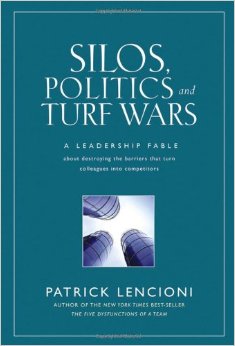
Too much of life and culture these days is polarizing. It may have always been so. Good guys and bad guys. Heroes and villains. Liberals and conservatives. Secular and religious. The list goes on forever.
When I woke this morning, many of these ideas and conflicts were bouncing around in my brain. Then the idea came to mind: “Not Us and Them, but We.” What can grow our capacity for civil discourse? How can we nurture curiosity in our thinking, especially in communication with those who have very different ideas than we might have? What moves us toward understanding rather than acting on the motivation to move “them” to think like “us”?
Often in the last several weeks, in particular, conversations either center on politics, or it’s “the elephant in the room”. Fortunately I have friends who differ from me in some of our political views but they seek to understand, which gives me the same potential for my understanding their views.
Organizational psychologist and author, Adam Grant, often points to the distractions that keep us divided or on edge with each other. He gives wise counsel.

I also have friends who have pretty much ghosted me over the same views. Conversation is just too emotionally charged. Too anxiety-provoking. I respect that, but I also miss the possibility of learning from them and dialoging together such that both of us can see things from a higher vantage point.
Writer, leadership coach Scott Sauls posted an article just this weekend that resonates with this very current issue. Without really focusing on politics, he expands the idea of differences to incorporate our stances on all of life…and on people with whom we have conflict. In fact, he points to three identities we may have for ourselves and others, and how those identities keep us divided against each other. Below are quotes from this article – click on the link to read all the wisdom found there. Still a quick read.
“Family, work, team, tribe, church, community, and nation—every sphere of life has its culture, and in each one, we assign roles. We naturally place people or groups into the categories of victim, villain, or hero to suit our own biases. Sometimes, one person or group is cast in all three roles, as we seek to simplify complex situations and deflect blame away from ourselves.”
“In almost every conflict, we instinctively conclude that someone is hurt, someone is to blame, and someone must intervene to make things right. These roles are common in the stories we read, the movies we watch, the news we consume, and the communities we are part of. But victim, villain, and hero are also the roles we quietly assign to ourselves and others as we navigate difficult relationships and painful experiences.”
“The Peril of Playing the Victim – When we assume the role of victim as our primary identity, we risk trapping ourselves in a story of bitterness and self-pity. We replay the wrongs done to us over and over, feeding a narrative that makes the presumed offender larger than life and ourselves perpetually powerless. Over time, the victim mindset tempts us to believe that others are responsible for our misery and that our healing depends almost entirely on their repentance or punishment.”
“The Peril of Casting Others as Villains – If playing the victim is one danger, the second is casting others as villains. When someone wrongs us, it is easy to reduce them to their very worst moment or season, and to nothing more than the sum of their sins. They are no longer a whole person with complexities, struggles, and good qualities—they are simply “the one who hurt me.” We judge them harshly, as though their worst moment defines their entire character, while conveniently minimizing our own flaws…The labels we assign—especially when shaped by our pain—often obscure the truth.”
“The Peril of Seeing Ourselves or Others as Heroes – Another dangerous role to assume is that of the hero. Heroes see life in black and white—good versus bad, victims versus villains—and position themselves as the ones who can fix it all. Sometimes, this looks like trying to rescue others from pain, taking on burdens that aren’t ours. Other times, it looks like moral superiority: we believe we’re the righteous ones who would never behave like “those people,” and our role is to rescue others from “them.” Still other times, people want to step in as heroes to protect themselves from the wrath of “victims” who are known for punishing and persecuting those who refuse to rescue them from their “villains.””
Sauls ends his post with the Gospel of Jesus Christ being the better story:
“The gospel dismantles the victim, villain, and hero roles by telling a different story—one where Jesus is the only one who can truly make things right. It teaches us that:
- If we are in fact victims, we are seen, loved, and cared for by a God who is near to the brokenhearted (Psalm 34:18). But our healing is not dependent on human justice; it is rooted in the grace of God, who works all things together for good (Romans 8:28).
- As those who have been wronged, we must forgive as we have been forgiven (Ephesians 4:32). Forgiveness does not deny the reality of harm, and it does not grant trust where trust has not been reestablished through repentance, reconciliation, and sincere efforts to repair, but it releases us from the burden of bitterness and entrusts justice to God.
- As those tempted to self-righteousness and pride, we are reminded that we, too, have sinned and that our salvation is a gift, not a reward (Romans 3:24). Paul’s rhetorical question and subsequent answer—“Are we any better? Absolutely not” (Romans 6:15)!—become relevant for us, as well.
When we let go of the victim, villain, and hero mindsets, we step into a life shaped by humility, grace, and reconciliation. Humility reminds us that we are all broken and in need of mercy. Grace empowers us to forgive others as we have been forgiven. And reconciliation—where possible—invites us to repair what is broken and pursue peace.” – Scott Sauls
Where do you see yourself in these scenarios? Do we view ourselves as the hero, fighting for others? Or are we the victim and see another (person or party) as the villain?

Thoughtful disagreement doesn’t start with “You’re wrong!” It begins with “I’d love to understand your thinking better.” Attacking conclusions closes minds. Asking about reasoning opens them. Good debates don’t have winners or losers. They leave everyone more informed. – Adam Grant, X
My husband often puts one of his favorite adages – “We are better than me.” – in work conversations, especially those related to drifting into silo thinking. So much better than where we often find ourselves, if we’re not intentional, which is an “us and them” mentalities. Unfortunately, the “us” is too often deemed better than “them”. Whenever we can, let’s work toward getting “the us’s” to talk to “the them’s” with the goal of becoming “a we”. I know this might seem less complicated in a work situation when an employer mandates this sort of action. However, it is also possible in families, friend groups, and communities which have become fractured because of a rift or rupture. We can be hopeful if we’re willing to be humble, forgiving, curious, and full of grace. God will definitely grease the tracks in that direction.
In It Together – Emma Scrivener
How Estrangement Has Become an Epidemic in America – Joshua Coleman and Will Johnson
What Estranged Families Can Teach Us About the Political Divide – Joshua Coleman
“Seeing every interaction as win-lose isn’t smart. It’s shortsighted. Evidence: People who view others’ gains as their loss see potential allies as hostile and miss out on productive collaborations. In the long run, the best path to success and happiness is striving for win-win.” – Adam Grant, X






























